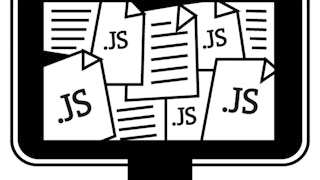Designed for the not-yet-experienced programmer, this course will provide you with a structured foundation for developing complex programs in the fields of computer science or data science. If you are a self-taught programmer with scattered bits of understanding, or a complete novice, this is the course for you.

Enjoy unlimited growth with a year of Coursera Plus for $199 (regularly $399). Save now.

(30 reviews)
Skills you'll gain
Details to know

Add to your LinkedIn profile
4 assignments
See how employees at top companies are mastering in-demand skills

There are 5 modules in this course
Welcome to the course! In this module, we will explore what makes the python programming language so excellent to learn and begin to write our first python programs. We will learn about variables, how to use them, how a program makes decisions using if statements, and how to interact with the user through input() and print() functions.
What's included
13 videos7 readings2 assignments1 programming assignment1 discussion prompt
In this module, we will learn how to make our programs more flexible, and able to solve more complex problems. We'll see how we can make more complex decisions using the if statement by including elif and else. We'll also see how we can have the program repeat actions using for and while, and be introduced to other useful functions such as range(), mean(), median(), and mode().
What's included
22 videos2 readings2 assignments1 programming assignment
In this module, we will learn how to create our own custom functions, which allow us to reuse our code, divide programs into meaningful chunks, and also reduce the number of errors and bugs in our code. This content will be split over 2 modules, with the first few sections being covered in this first module, with the remainder being covered in the next module.
What's included
15 videos2 readings2 programming assignments1 peer review1 ungraded lab
In this module, we will learn review functions, and continue practicing creating our own functions. There are a few lecture segments that touch on a few finer points from this chapter, and then more live programming examples. At this point in the semester, we have enough "tools" that we can write a larger program! You should experiment in the Reflective Practice and see what you can accomplish! In the full version of this course, this module also includes the beginning of a larger, 2 week long, project. Therefore, the content in this Module is somewhat shorter than normal.
What's included
9 videos2 readings2 programming assignments
What's included
2 readings
Build toward a degree
This course is part of the following degree program(s) offered by Ball State University. If you are admitted and enroll, your completed coursework may count toward your degree learning and your progress can transfer with you.¹
Instructor

Offered by
Explore more from Software Development
 Status: Preview
Status: PreviewUniversity of Leeds
 Status: Free Trial
Status: Free TrialDuke University
 Status: Free Trial
Status: Free TrialUniversity of London
 Status: Preview
Status: PreviewUniversity of Leeds
Why people choose Coursera for their career




Learner reviews
30 reviews
- 5 stars
86.66%
- 4 stars
6.66%
- 3 stars
3.33%
- 2 stars
0%
- 1 star
3.33%
Showing 3 of 30
Reviewed on Dec 25, 2024
Very gentle, but gives a firm grounding in the absolute essentials of Python programming.
Reviewed on Dec 24, 2023
Well run course. A professor who really wants you to succeed.
Reviewed on Aug 10, 2024
A terrific introduction to coding--and a broad one at that--for folks with no background whatsoever.

Open new doors with Coursera Plus
Unlimited access to 10,000+ world-class courses, hands-on projects, and job-ready certificate programs - all included in your subscription
Advance your career with an online degree
Earn a degree from world-class universities - 100% online
Join over 3,400 global companies that choose Coursera for Business
Upskill your employees to excel in the digital economy
Frequently asked questions
To access the course materials, assignments and to earn a Certificate, you will need to purchase the Certificate experience when you enroll in a course. You can try a Free Trial instead, or apply for Financial Aid. The course may offer 'Full Course, No Certificate' instead. This option lets you see all course materials, submit required assessments, and get a final grade. This also means that you will not be able to purchase a Certificate experience.
When you purchase a Certificate you get access to all course materials, including graded assignments. Upon completing the course, your electronic Certificate will be added to your Accomplishments page - from there, you can print your Certificate or add it to your LinkedIn profile.
Yes. In select learning programs, you can apply for financial aid or a scholarship if you can’t afford the enrollment fee. If fin aid or scholarship is available for your learning program selection, you’ll find a link to apply on the description page.
More questions
Financial aid available,

